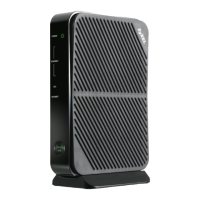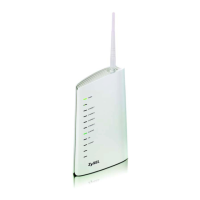Chapter 12 VPN
P-792H v2 User’s Guide
183
12.9.12.2 Telecommuters Using Unique VPN Rules Example
In this example the telecommuters (A, B and C in the figure) use IPSec routers
with domain names that are mapped to their dynamic WAN IP addresses (use
Dynamic DNS to do this).
With aggressive negotiation mode (see Section 12.9.6 on page 178), the P-792H
v2 can use the ID types and contents to distinguish between VPN rules.
Telecommuters can each use a separate VPN rule to simultaneously access a P-
792H v2 at headquarters. They can use different IPSec parameters. The local IP
addresses (or ranges of addresses) of the rules configured on the P-792H v2 at
headquarters can overlap. The local IP addresses of the rules configured on the
telecommuters’ IPSec routers should not overlap.
See the following table and figure for an example where three telecommuters
each use a different VPN rule for a VPN connection with a P-792H v2 located at
headquarters. The P-792H v2 at headquarters (HQ in the figure) identifies each
incoming SA by its ID type and content and uses the appropriate VPN rule to
establish the VPN connection.
Table 55 Telecommuters Sharing One VPN Rule Example
FIELDS TELECOMMUTERS HEADQUARTERS
My IP Address: 0.0.0.0 (dynamic IP address
assigned by the ISP)
Public static IP address
Secure Gateway
IP Address:
Public static IP address 0.0.0.0 With this IP address
only the telecommuter can initiate
the IPSec tunnel.
Local IP Address: Telecommuter A: 192.168.2.12
Telecommuter B: 192.168.3.2
Telecommuter C: 192.168.4.15
192.168.1.10
Remote IP
Address:
192.168.1.10 0.0.0.0 (N/A)

